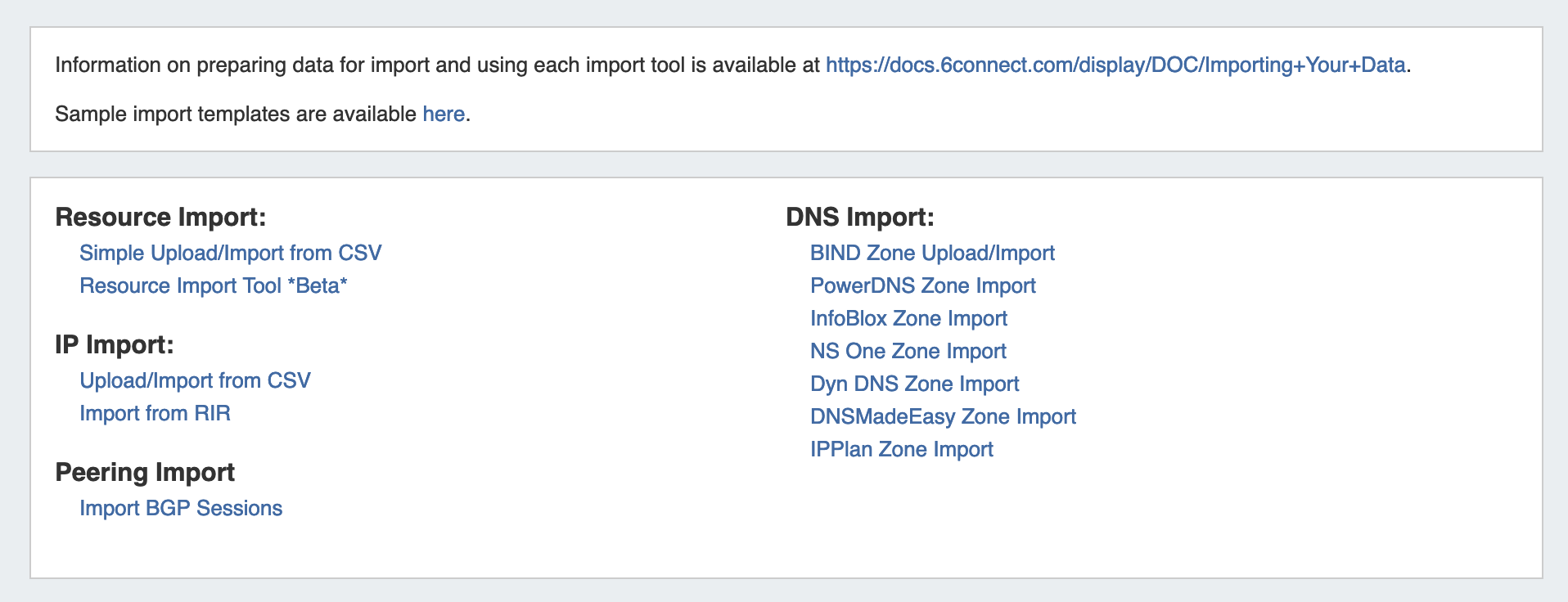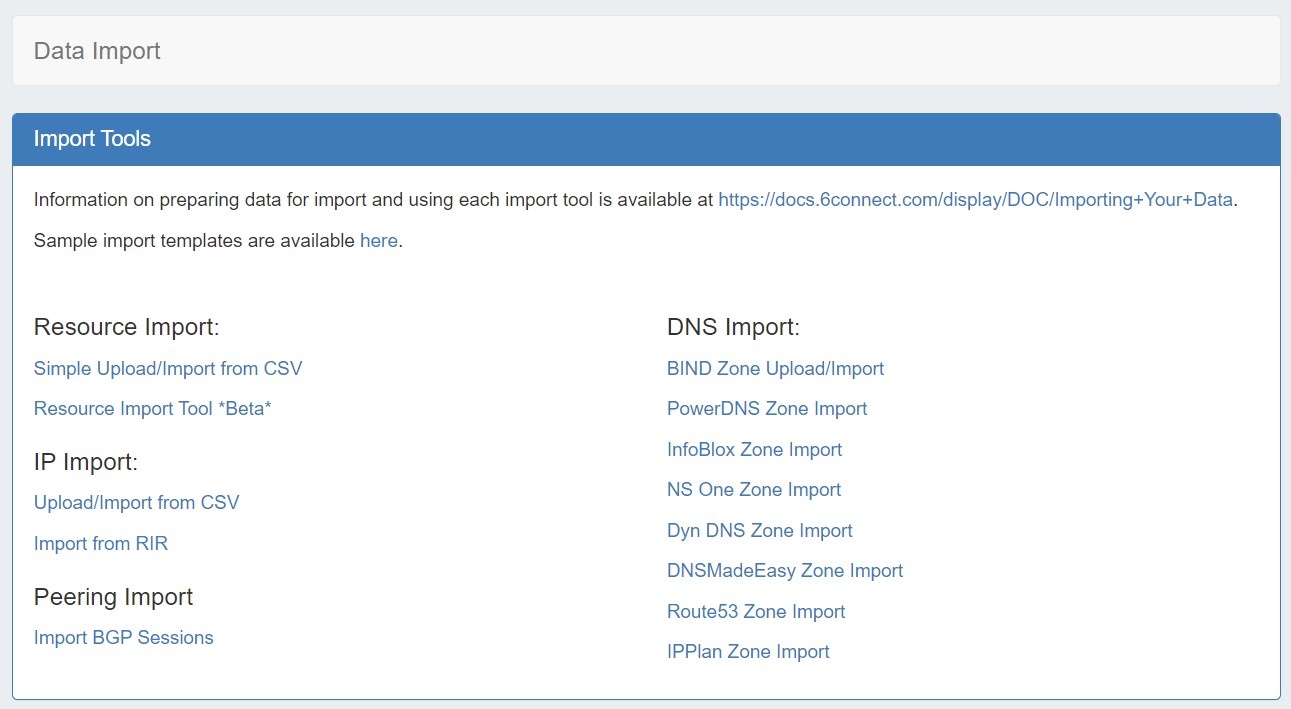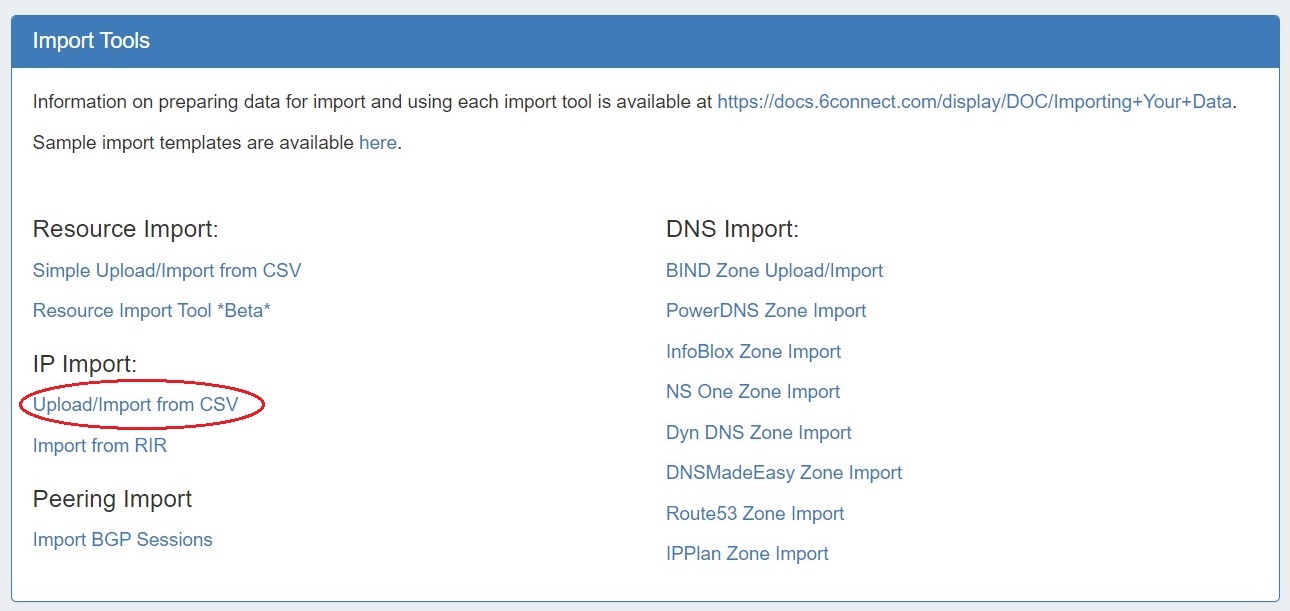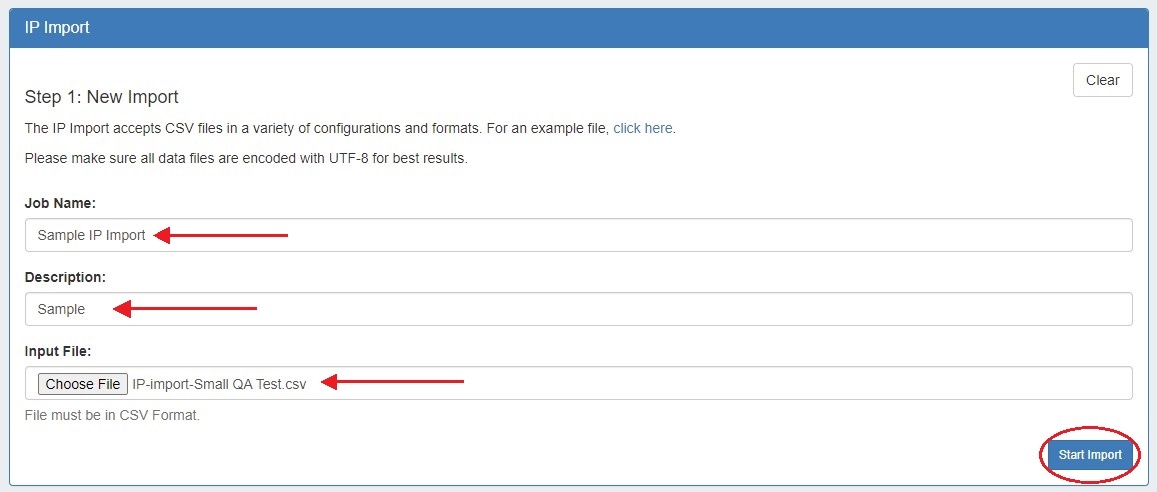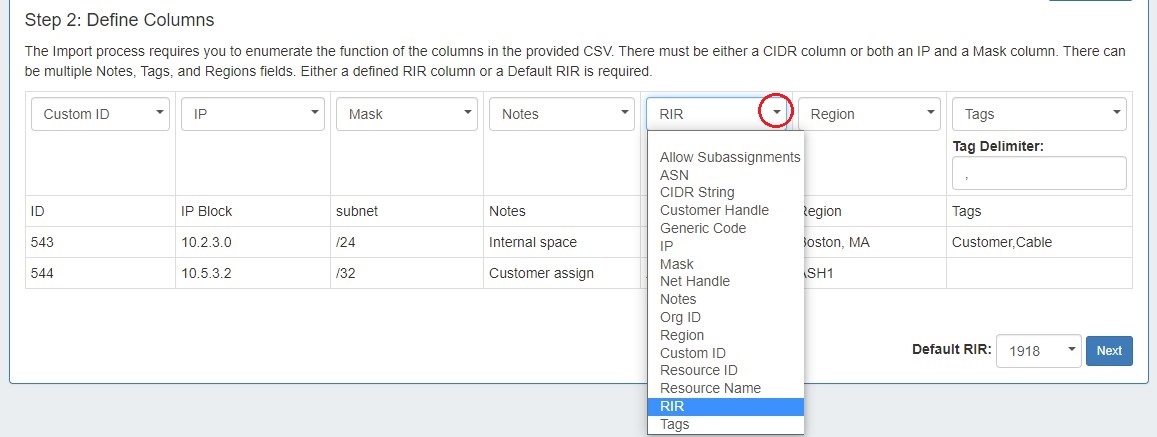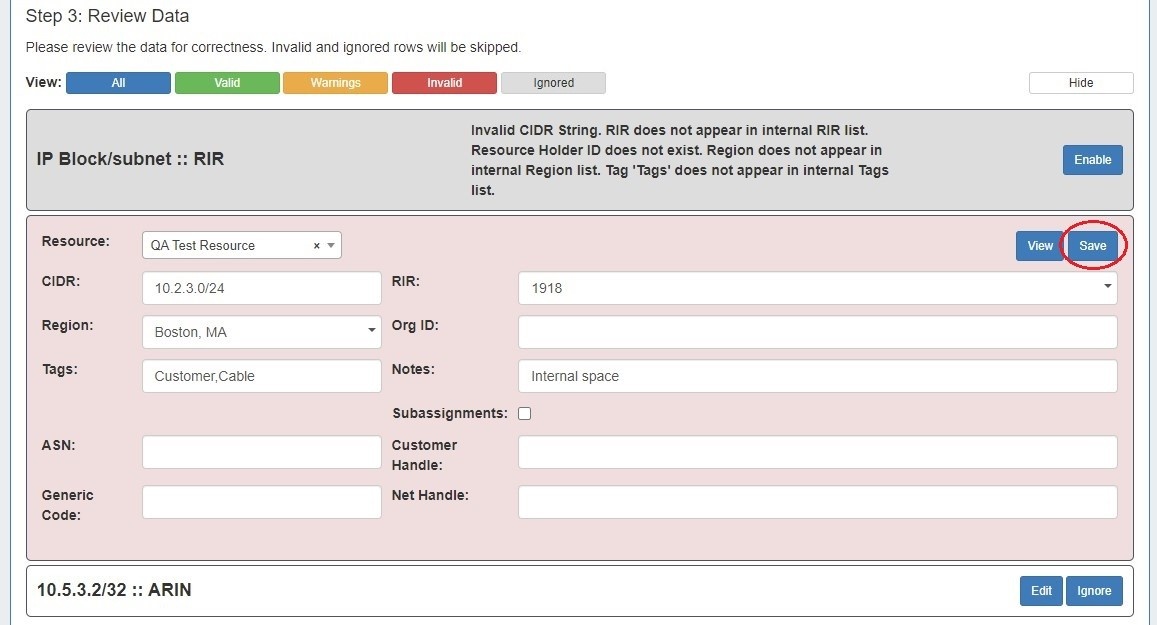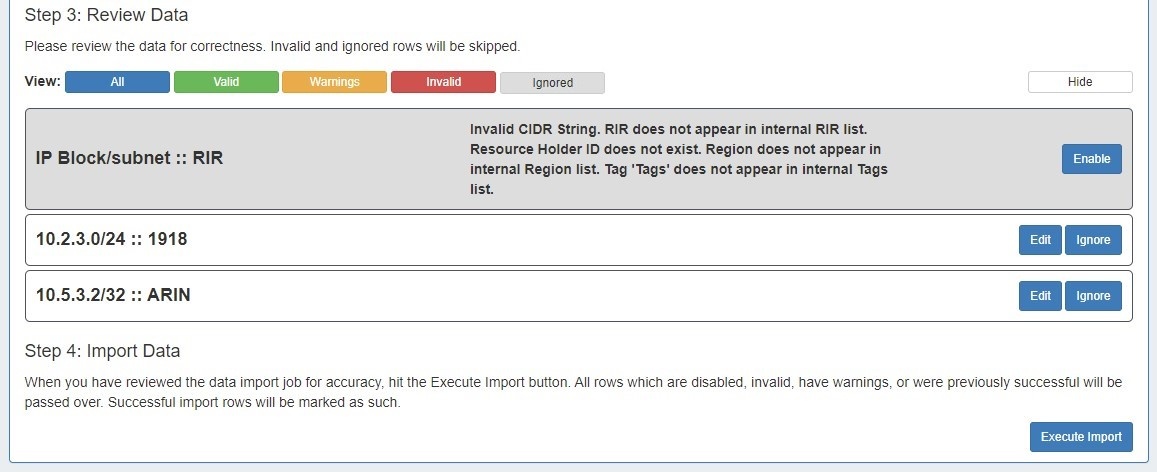...
The Upload / Import from CSV tool is used if you have a simple .csv file with IP block information, such as CIDR, Mask, ASN, RIR, etc. It is accessed from the Data Import Tab from the Admin section of ProVision.
To import your IP block information, follow the following steps:
...
Navigate to the Data Import Tab from the Admin button. Select "Upload / Import from CSV" under "IP Import".
Create a Job Name and Description for the import. This is especially useful to keep track of progress in cases the data arrives from multiple sources, or will require multiple stages of manual review.
Select the .csv file that you prepared above by selecting the "Choose File" button, and browsing to the correct file location. Then hit "Start Import".
| Note | ||
|---|---|---|
| ||
Although you cannot add new files to an existing job, for jobs with multiple sources for data (which may have different formatting), you can simply create separate jobs and descriptions for each source - no need to manually combine the data into one file before importing. The Import tool's mapping and editing functions will allow for the data to be reconciled in ProVision. For large data sets where multiple stages of manual review might be needed, you can create a new job using the same set of data files in order to work in parallel on a different portion of the data. |
After importing, the new job will appear under the "Existing Jobs" section. To continue working with this job, select it from the list (by clicking on the linkjob name) and the next step will appear on the page.
Step 2: Define Columns
...
Other columns which do not apply under the available definitions should be left as blank, and will be skipped during the upload process.
Make sure that you have defined all desired fields by using the scroll bar below your data to view additional columns.
When completed, hit "Next".
...
| Tip | ||
|---|---|---|
| ||
If your .csv has a header row as the first line, that row may give information that produces a missing reference notice - such as "Tag", "Region", "Block", and so forth. If this is the case, simply uncheck that item and add only the desired references. |
In this example, we get a notification that we are missing a tag named "Tags". However, we know by looking at our data that is simply an item that was part of the header line in the .csv, so we want to bypass this step.
...
If warnings or invalid entries are found, you may edit the data by clicking the "Edit" button.
Here you can edit the invalid field, or add /change information for any other available field.
After editing, hit "Save". If the edits are valid, the background color for the data row will be white.
Continue reviewing and editing data as desired. When done, proceed to Step 4.
Step 4: Execute Import
When the review step is completed, hit the "Execute Import" button. A progress bar will appear to show progress and note errors if they occur.
When the bar reaches 100%, the import is complete. The Data Review section will show which data rows were successfully imported.
Post Import Followup
...
If the IP Import was fully successful, and you do not wish to retain the job data, the Import Job may be deleted from the "Existing Jobs" list by clicking the delete icon button next to the job name.
| Warning |
|---|
Deleting an import job is permanent and non-recoverable! When working with large or sensitive import jobs, consider performing a backup of your instance before and after the import job as a safeguard. |
...
